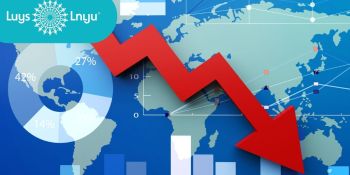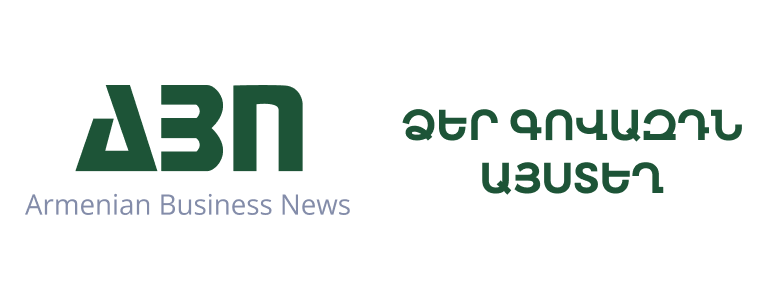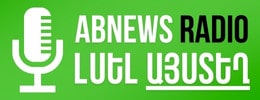-

Why is the boundary between a leader's professional and personal identity important?
2025/08/03/ 10:21 -

Three practical steps that will prevent you from losing the people who keep your business running
2025/08/01/ 17:17 -

IDBank's new premium business card – Mastercard Business Preferred
2025/08/01/ 12:45 -

Which professions will be the first to lose their jobs due to AI. Microsoft's warning
2025/07/31/ 14:21 -

Why do some organizations turn AI into a strength, while others fail?
2025/07/30/ 17:49 -

Gucci's management has changed against the backdrop of declining sales
2025/07/30/ 16:57 -

USA is exerting pressure to extract agreements
2025/07/30/ 14:36 -

The Armenian state budget has deviated from the course: what the analysis of the Luys Foundation says
2025/07/29/ 12:43 -

How does the Armenian economy respond to challenges? facts from the data for May-June
2025/07/28/ 12:40 -

Beating the heat, earning idcoins: Idram & IDBank
2025/07/25/ 17:36
 Subscribe
Subscribe

How does the Armenian economy respond to challenges? facts from the data for May-June
Analysis |

The year is 2025. In May, the indicator of economic activity reached 10.4 percent, which is almost double the 5.4 percent in April.
Economic Activity Sees Strong Growth
In May 2025, Armenia’s economic activity index reached 10.4%, nearly doubling April’s 5.4%. For the January-May period, the growth amounted to 5.7%. This strong performance was mainly driven by a 22.2% increase in construction and a 10.8% increase in services excluding trade. At the same time, industrial output fell by 5.9%, though this decline was mitigated by a 17.9% rise in mining. The 13.5% contraction in manufacturing was largely due to reduced production of alcoholic beverages and non-ferrous metals.
Remittances Remain at a High Level
In May, net non-commercial remittances rose by 19.5%. Inflows from Russia surged by 48.3%, serving as the main driver of the overall increase. Meanwhile, remittances from the United States saw a slight decline.
Inflation Eased, Central Bank Holds Interest Rate Steady
In June, annual inflation dropped to 3.9%, down from 4.3% in May. Food (6.2%) and education (7.8%) prices continue to show strong growth. At its June 17 meeting, the Central Bank kept the refinancing rate unchanged at 6.75% to maintain inflation near the CBA’s 3% medium-term target.
Export and Import Decline Slows
In May, exports dropped by 39.3% and imports by 20.4%, a notable improvement compared to April when exports fell by 56.6% and imports by 41.1%. The sharp decline in exports was mainly due to a decrease in precious and semi-precious stones and vehicles. However, exports of traditional goods—such as processed food, textiles, and minerals—increased, helping offset the overall drop. Excluding the impact of re-exported goods, exports rose by 9.2% and imports by 14.3%.
During January-May, exports declined by 57.4% and imports by 42%. The trade deficit reached 7% of GDP, up from 5% the previous year.
International Reserves Increase
In June, Armenia’s gross international reserves increased by $145 million, reaching $4 billion, equivalent to about 3.1 months of import coverage.
Dram Remains Stable with Minor Fluctuations
In June, the Armenian dram depreciated slightly by 0.1% against the US dollar and by 3.7% against the euro. Since the beginning of 2025, however, the dram has appreciated by 3% against the dollar.
Stable Growth Continues in the Banking Sector
In May, dram-denominated deposits and loans in commercial banks grew by 1% and 1.3%, respectively. On an annual basis, adjusted for exchange rate effects, deposits increased by 13.6% and loans by 27.9%, with loan growth driven by an expansion in consumer lending.
Budget Recorded a Deficit in May
In May 2025, the budget posted a deficit of 0.8% of GDP. Tax revenues rose by 14.1%, driven by strong growth in VAT (17.9%) and turnover tax (72.5%). Total expenditures grew by 28.2%, mainly due to significant increases in capital and defense spending. While current expenditures grew modestly by 3%, social spending (benefits and pensions) rose by 12.8%.
For the January-May period, the cumulative budget deficit stood at 0.2% of GDP.
*The article was also prepared using data from AI․

















